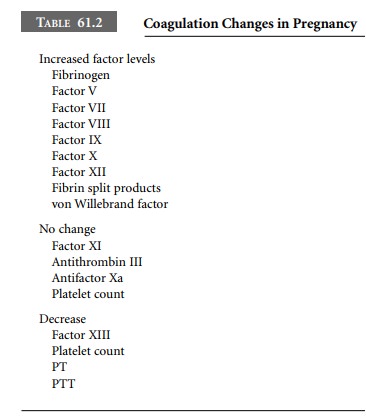Chapter: Clinical Cases in Anesthesia : Abruptio Placenta and Placenta Previa
Describe the effects of pregnancy on coagulation
Describe the effects of pregnancy on coagulation.
Pregnancy is commonly referred to as a
hypercoagulable state and is associated with an increased incidence of
throm-botic disease. Pregnancy is characterized by an increase in the level of
clotting factors, in particular fibrinogen. There is an increase in fibrinogen
catabolism by thrombin, as marked by increased levels of fibrinopeptide A.
Platelet count may fall or remain normal in pregnancy. Rolbin et al. (1988)
demonstrated no statistically significant change in platelet count during
pregnancy; however, 104 of 2,000 patients had platelet counts of under 150 × 109 per liter. Fay et al. (1983) found a fall in
platelet count due to increased platelet consumption in the last 8 weeks of
gestation. In addi-tion, there is a dramatic short-term increase in
coagulability immediately following delivery as manifested by an increase in
factor V and VIII activity, a fall in fibrinogen levels, and a decrease in
partial thromboplastin time (Table 61.2).

Related Topics